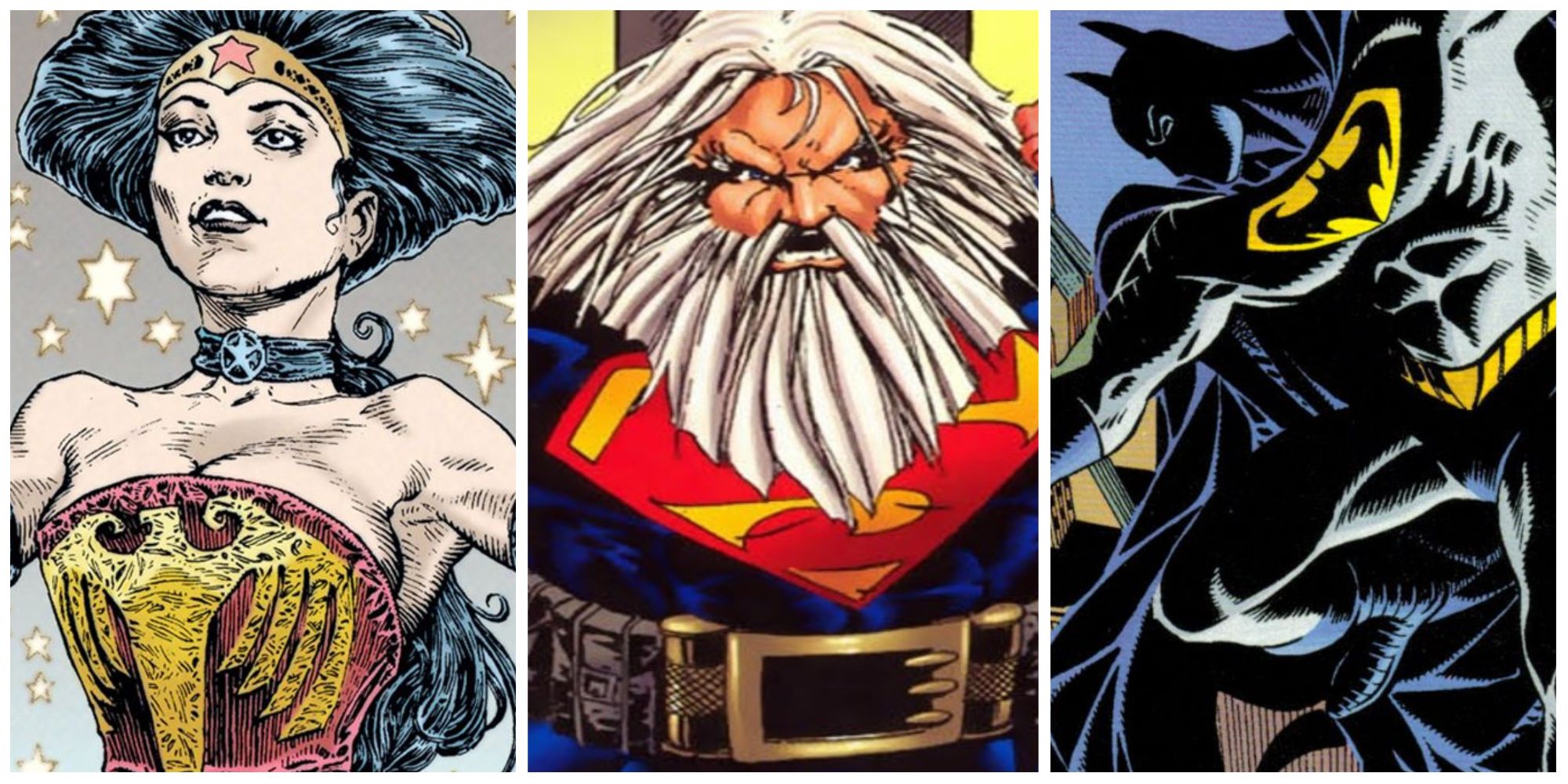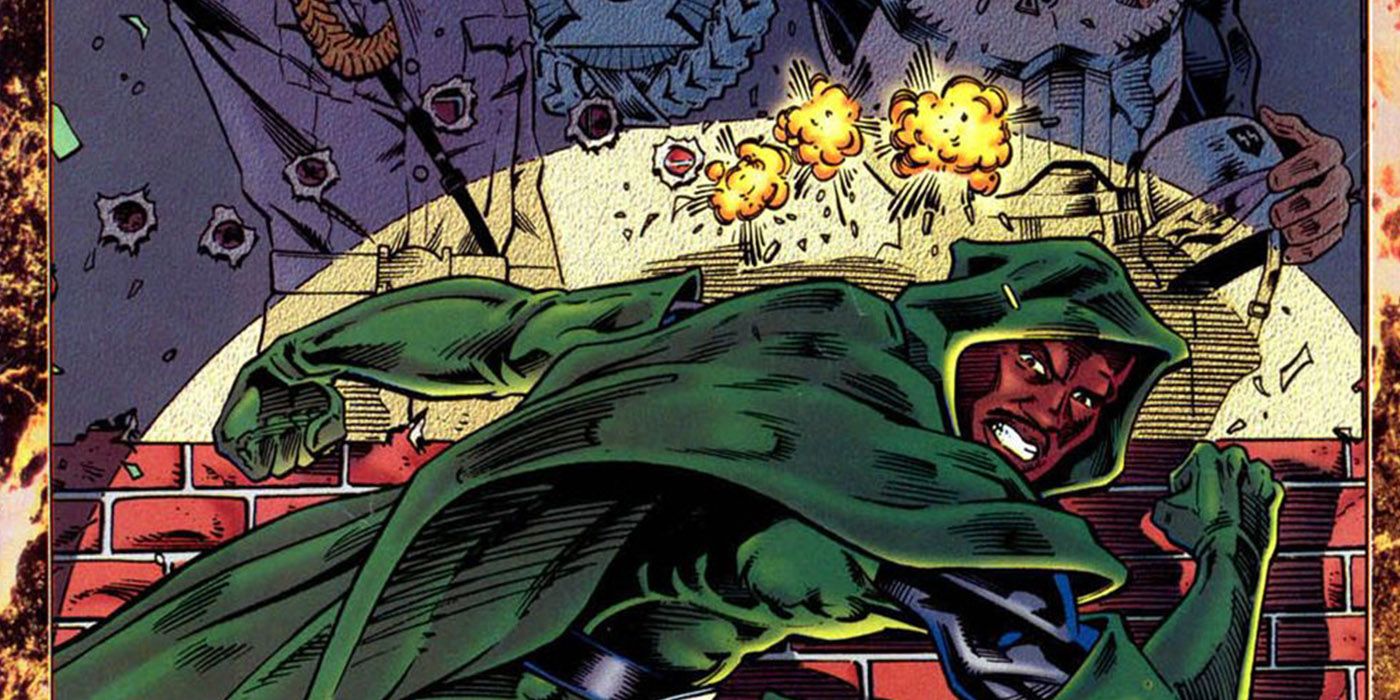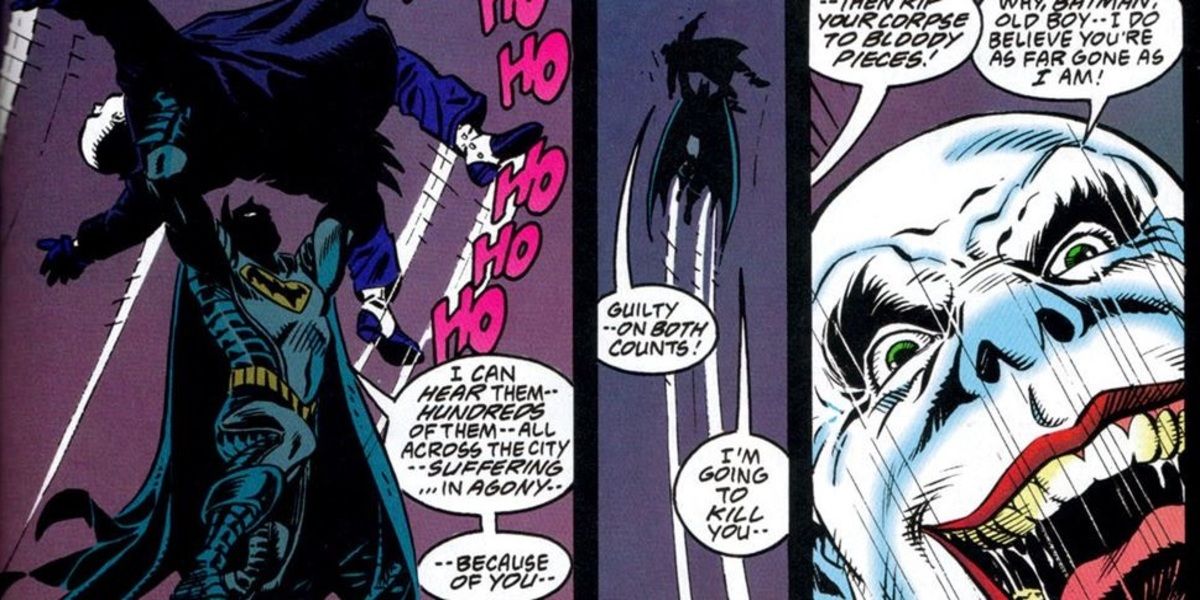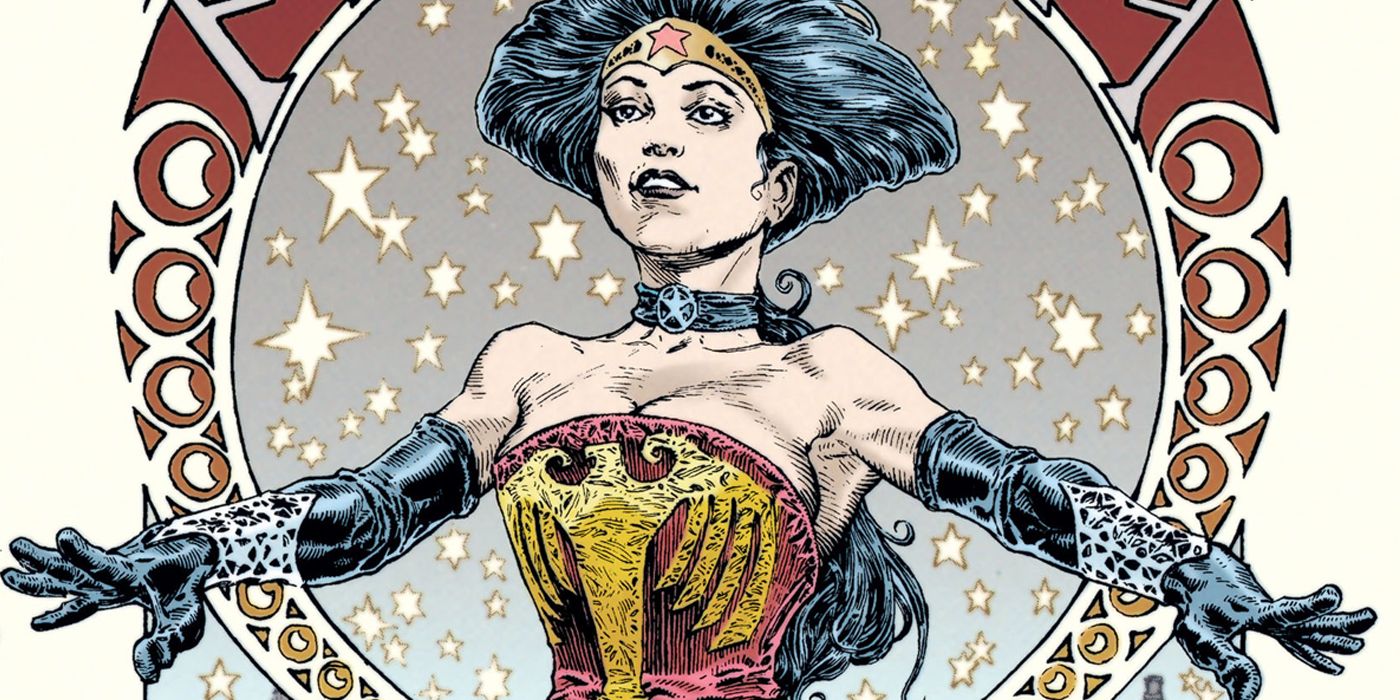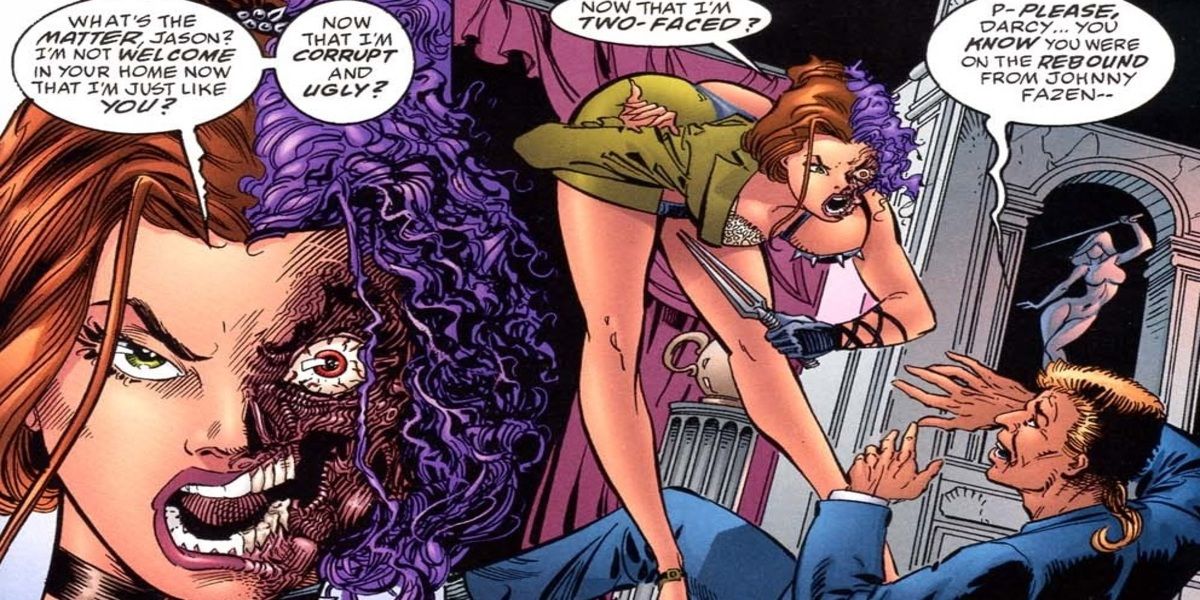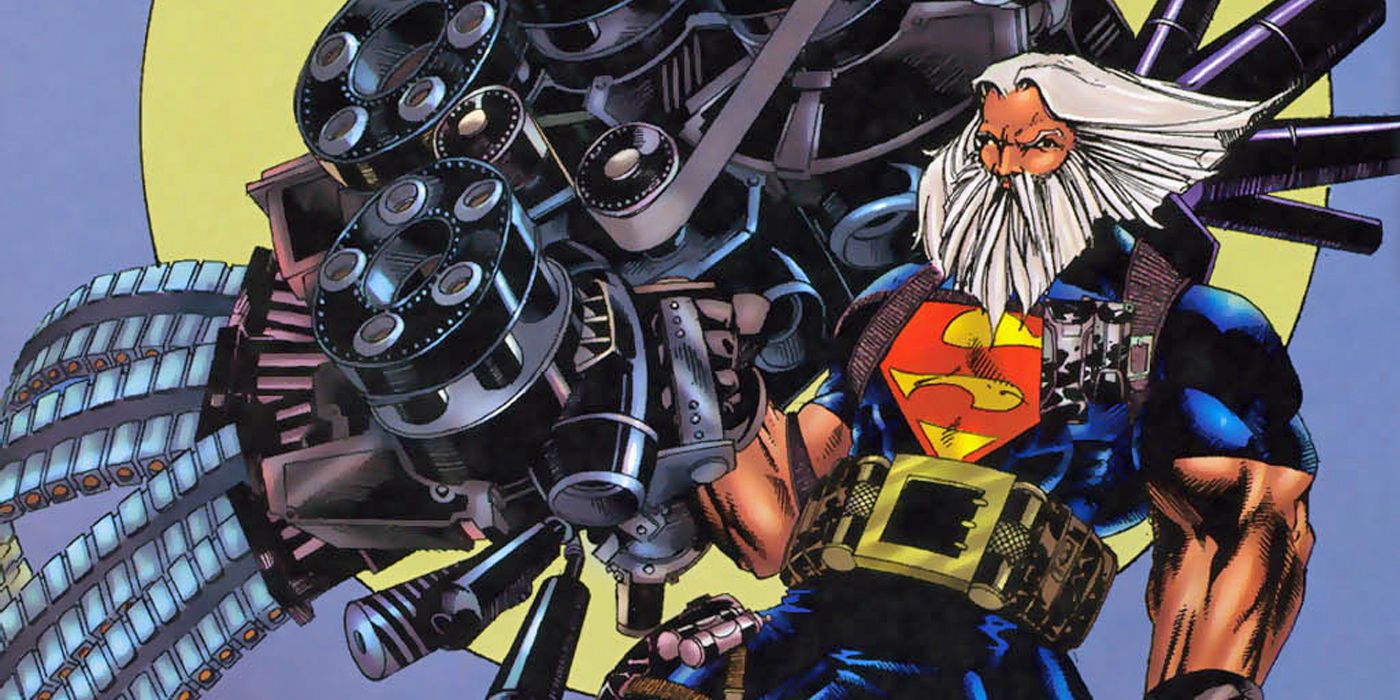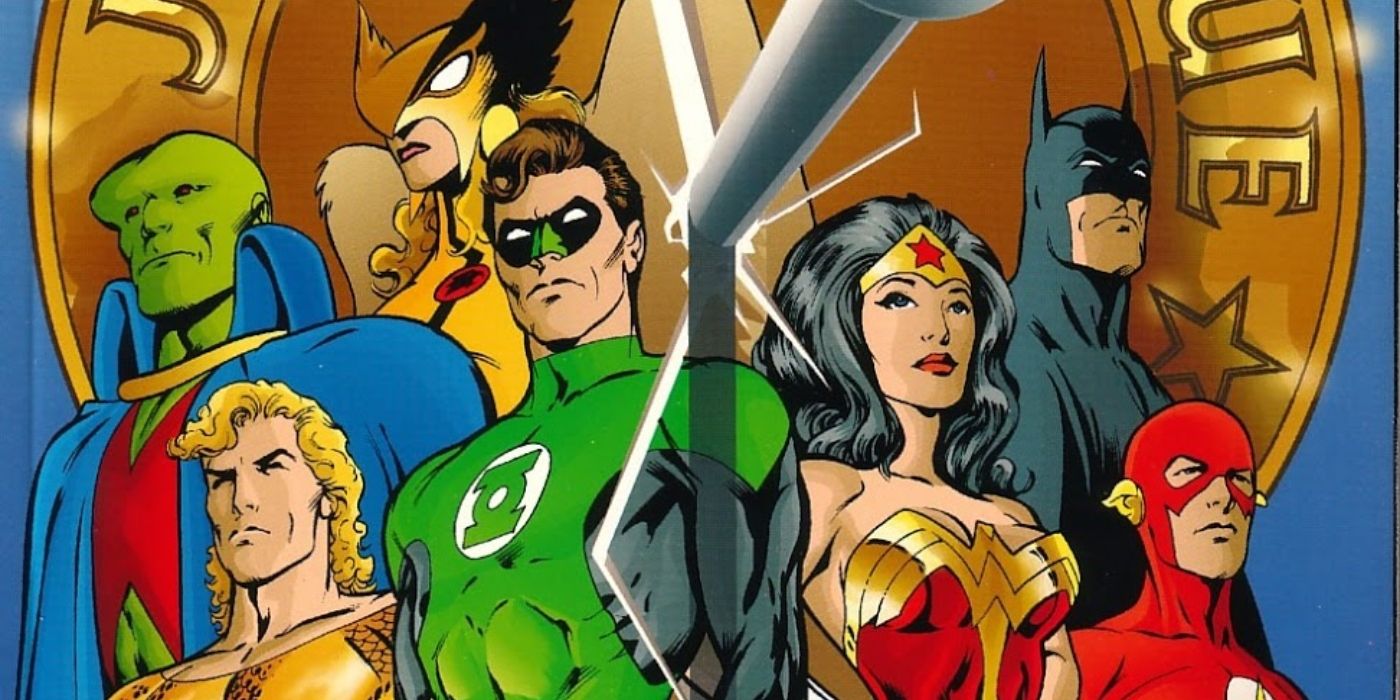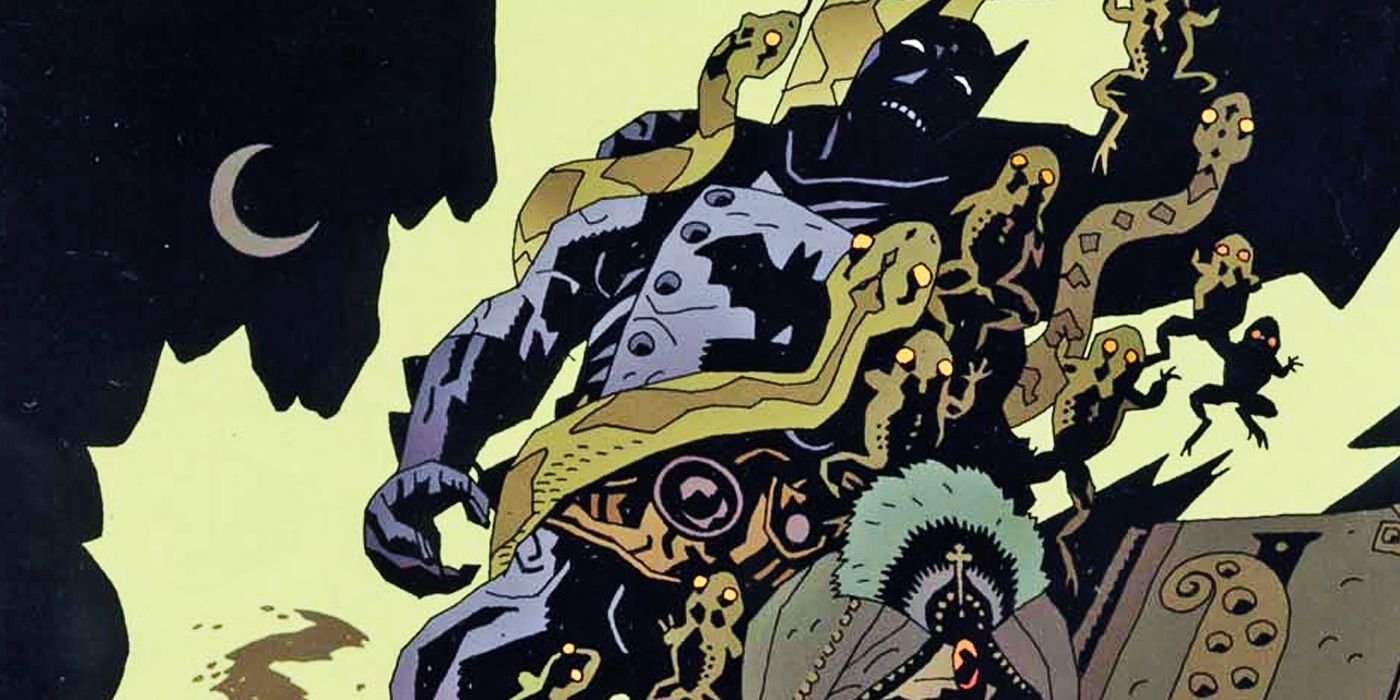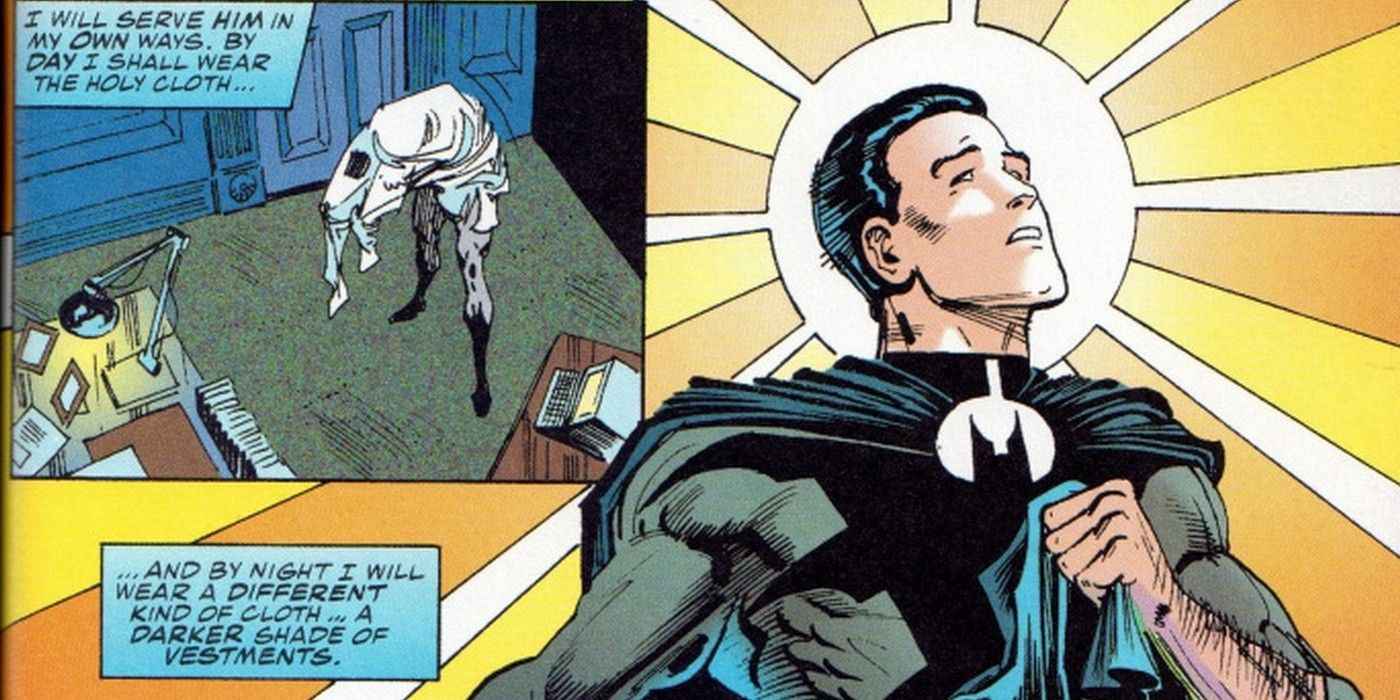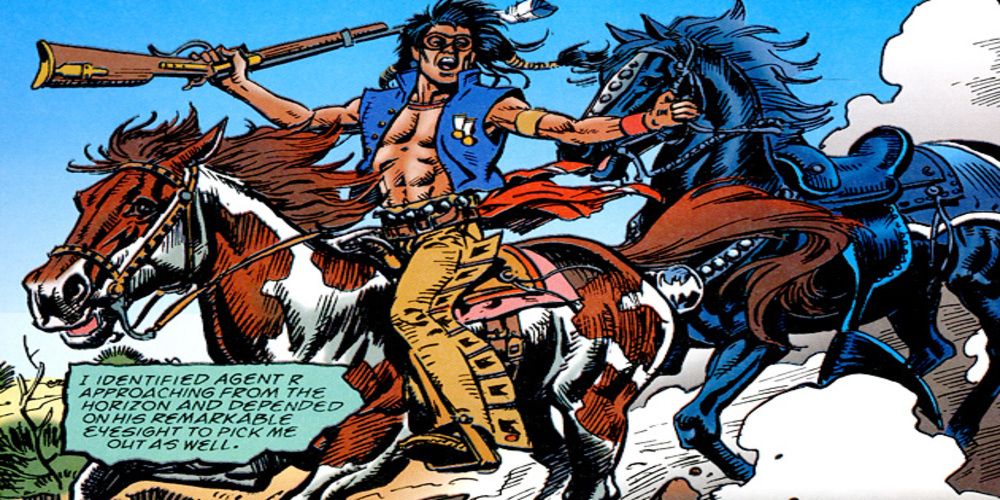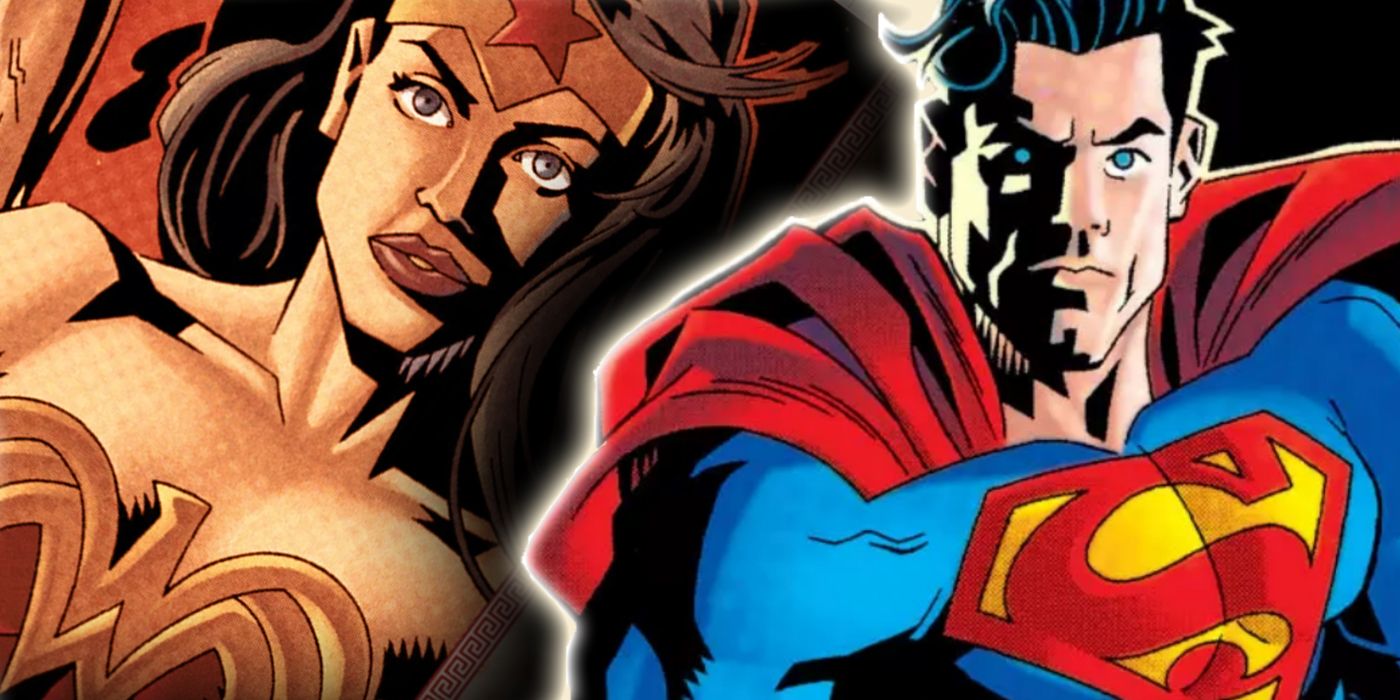The Elseworlds tales of the DC Comics universe allow creators to take liberties with the publisher's most iconic characters. Placing the heroes and villains of the DCU in alternate timelines and universes opens a wide door of possibilities to tell new and exciting stories. After all, DC has a truly limitless array of scenarios given its strong reliance on the multiverse concept.
But sometimes the creatives at DC go to the extreme to tell those stories. New takes on Batman, Superman, Wonder Woman and their associated characters can keep them fresh. However, they don't always come across as fully authentic.
10 Hal Jordan And Guy Gardner Fight Over Who's A Better Nazi
Green Lantern Annual (Vol 3) #3 By David Devries, Dean Zachary, Andrew Pepoy, Steve Mattsson And Kevin Cunningham
"Ring of Evil" imagines a world where the Third Reich conquered the United States. A gathering of twelve Nazis summoned a demon who gifted the regime with a power ring containing the sacrificed souls of the twelve.
Years later, Hal Jordan and Guy Gardner each find themselves with demon power rings, as the regime is opposed by Oliver Queen, John Stewart and their hooded Green Lanterns. The two battle over their opposing views of the best path for the Reich. There are plenty of reasons Green Lanterns have fought over the years but never about which is the better Nazi.
9 Lex Luthor Becomes The Joker
Superman: Speeding Bullets By J.M. DeMatteis, Eduardo Barreto And Les Dorscheid
In Superman: Speeding Bullets, the Kryptonian lifeboat containing Kal-El is found by Thomas and Martha Wayne. They adopt the baby, who they name Bruce, and are eventually slain as they are in the prime timeline. This superpowered Batman eventually comes into conflict with the Joker/Lex Luthor.
Luthor was disfigured in a chemical fire, accounting for his becoming the Clown Prince of Crime. As this is the post-Crisis Lex, it's too much of a stretch to think even such a traumatic event would break his famous mental discipline.
8 Wonder Woman Is A Post-Victorian Victim
Wonder Woman: Amazonia By William Messner-Loebs, Phil Winslade, Patricia Mulvihill & Digital Chamelon And John Workman
Wonder Woman: Amazonia depicts a struggle for the British throne in the aftermath of a fictional assassination of Queen Victoria. Diana was absconded from Themyscira by the Royal Marines and forced against her will to marry Steve Trevor. Eventually she becomes the Wonder Woman and deposes the ruthless King Jack before wedding the new heir, Charles.
The biggest reason this version of Wonder Woman is so weird is that she has no sense of agency, essentially becoming a victim of human trafficking. And the pun of the royal couple being "Diana and Charles" didn't age as well as the creators had hoped.
7 Catwoman Defends Gotham Against A Vain Two-Face
Catwoman: Guardian Of Gotham #1 By Doug Moench, Jim Balent, Kim DeMulder And Rick Parker
The Batman mythos gets gender-swapped in Catwoman: Guardian of Gotham. It's an interesting notion, as Catwoman answers the Cat-signal by night, defending Gotham against villains. And it's nice to see a story that allows Catwoman to escape her villainous reputation. But the inversions are on the most superficial level.
Kyle has a maid - in the most stereotypical French maid outfit imaginable - and battles Darcy Dent, this universe's Two-Face. Darcy was a supermodel whose career was sabotaged by acidic facial cream. It may have been written in the 1990s, but this Elseworlds goes too far with its objectifications.
6 Superman: At Earth's End Goes Too Far In Every Direction
Superman: At Earth's End By Tom Veitch, Frank Gomez, Angus McKie And Bill Oakley
Someday, Superman will be the last surviving superhero in the DC Universe. Hopefully, if that story is ever told, it will be nothing like Superman: At Earth's End. This book involves Superman at more than a century old, living in a dystopian wasteland.
Superman battles mutant bats, twin clones of Adolf Hitler and an army of cyborgs determined to "cleanse" Gotham City. He also has to prevent Batman's corpse from falling into the hands of evil genetic scientists and wields an enormous gun that would make Rob Liefeld queasy. "Too far" is a phrase that doesn't do this one-shot justice.
5 Perry White Becomes A Xenophobe
Justice League: The Nail #1 By Alan Davis, Mark Farmer, Patricia Mulvihill & Heroic Age And Patricia Prentice
The concept of a world without a Superman isn't a new one to DC's Elseworlds stories. In Justice League: The Nail, the Kents never discover Kal-El's spacecraft, and the world never comes to know Superman. However, metahumans such as Flash, Green Lantern and the rest of the Justice League still come to pass.
Without Superman to set the standard, humanity becomes xenophobic toward super-powered beings. This includes Perry White, who aligns with Lex Luthor to launch an anti-metahuman propaganda campaign. Where The Nail goes too far is in turning honor-bound Perry White into a DC clone of Marvel's J. Jonah Jameson.
4 A Lovecraft Homage Misses The Mark On Batman Characters
Batman: The Doom That Came To Gotham #1-3 By Mike Mignola & Richard Pace, Troy Nixey, Dennis Janke, Dave Stewart And Bill Oakley
The worlds of Batman and H.P. Lovecraft should go together quite well. And in Batman: The Doom That Came to Gotham, they do for the most part. Where the styles diverge is off-course directions for some of Batman's villains that go just a little too far.
This is exemplified in its treatment of Ra's al Ghul. In the main continuity, Ra's is essentially an eco-terrorist with a clear and complex goal. In The Doom That Came to Gotham, he's reduced to a mere sorcerer, casting spells on Poison Ivy with the goal of cursing Harvey Dent. Ra's al Ghul and mysticism aren't mutually-exclusive, but they usually work together for greater purpose.
3 Holy Terror Muddles The Dark Knight's Motivations
Batman: Holy Terror By Alan Brennert, Norm Breyfogle, Lovern Kindzierski And Bill Oakley
Batman: Holy Terror takes place in a theocratic society, and Bruce Wayne is a Reverend in Gotham City. His parents were murdered when he was a child, but Bruce discovers it was a plot by the government. As he investigates, he discovers the state is experimenting on superhumans, including a dead Superman.
When the story ends, Batman resolves to fight crime ruthlessly in the name of God, abandoning any quest for vengeance. Regardless of his native environment, Batman would likely never let the murder of his parents go, even with new motivating factors for his crusade.
2 Civil War Batman Gets Cringeworthy
Batman: The Blue, The Grey, And The Bat By Elliot S. Maggin, Alan Weiss, Jose Luis Garcia-Lopez, Digital Chamelon And Richard Starkings
Placing Batman during the American Civil War is a good idea. Having Batman meet and serve under Abraham Lincoln is a silly but fun idea. Making Robin a half-Native American agent called Agent R? That's a little on the cringeworthy side.
Batman: The Blue, the Grey and the Bat came out in the same year as the classic Gotham by Gaslight. The notion of placing DC heroes in different time periods was one the company was high on at the time. In the end, the story wound up being pretty dull, but the weirdly-stereotypical Native American Robin wakes the reader up in the worst way.
1 Centaur Superman And Nazi Wonder Woman Is Just Too Much
Superman/Wonder Woman: Whom Gods Destroy #1-4 By Chris Claremont, Dusty Abell, Drew Geraci And Gloria Vasquez
In Superman/Wonder Woman: Whom Gods Destroy, the Third Reich never fell (again), Superman battles harpies and trolls and the Greek gods are Nazis. If that's not enough, Lois is transformed into Wonder Woman, Superman changes allegiances between good and evil at least twice and transforms into both a woman and a centaur.
To say this Elseworlds story goes too far is a gross understatement. Like many sub-par Elseworlds tales, it's too many interesting ideas thrown together in the same book. All the weirdness with Superman and Wonder Woman is simply too overwhelming for the reader.

